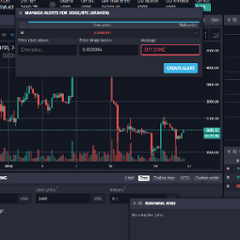dropwizard-guice-box
A slightly different take on Guice integration with DropWizard, which makes heavy use of multibindings to create a more plugin-like, modular experience.
Installation
Check the latest release and add the dependency to your POM:
<dependency>
<groupId>com.gruelbox</groupId>
<artifactId>dropwizard-guice-box</artifactId>
<version>latest release version</version>
</dependency>
All releases from 1.0.0 onwards are semantically versioned. You can safely take any release incrementing the minor or patch versions without worrying about compatibility.
Usage
public class MyApplication extends Application<MyConfiguration> {
// Optional - you can inject directly into your Application to get access
// to injected assets in the run() method.
@Inject private SomethingINeed somethingINeed;
@Override
public void initialize(final Bootstrap<MyConfiguration> bootstrap) {
super.initialize(bootstrap);
// Any modules listed here can implement Configured<MyConfiguration> to get access to the
// configuration during the injector build.
bootstrap.addBundle(
new GuiceBundle<MyConfiguration>(
this,
new MyApplicationModule(),
new MyOtherApplicationModule()
)
);
}
@Override
public void run(final MyConfiguration configuration, final Environment environment) {
// You can access injected assets here if you wish, however, multi-binding
// an EnvironmentInitialiser is a cleaner way to do this, allowing your code to
// be more modular.
somethingINeed.canNowBeUsed();
}
}
You now have access to some Guice idiomatic bind points in your Modules:
- Multibindings to
WebResourceprovide resources. - Multibindings to
HealthCheckprovide healthchecks. - Multibindings to
ExceptionMapperallow you to map exceptions from your endpoints to HTTP responses. - Multibindings to
Taskto provide administration tasks. - Multibindings to
Managedprovide controlled startup and shutdown of components. - Multibindings to
Serviceprovide controlled startup and shutdown of background processes. - Multibindings to
EnvironmentInitialiserallow you to hook into theApplication.runphase directly from anywhere in your code when you need to do anything else on startup, without having to add code toApplication.rundirectly.
All of these can inject as normal, and all except WebResource can be package private, aiding encapsulation (unfortunately, JAX-WS prevents this for JAX-RS resources).
The following are provided by default for injection anywhere:
- Your application configuration
- The
Environment - The
HttpServletRequestandHttpServletResponseduring web requests (thanks toGuiceFilter), if you installnew ServletModule()duringInjectorcreation.
In addition, any Module provided directly to GuiceBundle can support the Configured interface to gain access to the application configuration during bind time. This can be helpful where your configuration drives the choice of bindings.
Hibernate
If you're using Dropwizard's Hibernate bundle, you can provide your @Entity classes via injection too, which is great for keeping underlying database structure encapsulated in your modules.
Add the dependency:
<dependency>
<groupId>com.gruelbox</groupId>
<artifactId>dropwizard-guice-box-hibernate</artifactId>
<version>1.1.0</version>
</dependency>
And modify your code to construct and install the HibernateBundle, replacing the example DataSourceFactory configuration in the example with your requirements:
public class MyApplication extends Application<MyConfiguration> {
@Inject private SomethingINeed somethingINeed;
@Override
public void initialize(final Bootstrap<MyConfiguration> bootstrap) {
super.initialize(bootstrap);
HibernateBundleFactory<MyConfiguration> hibernateBundleFactory = new HibernateBundleFactory<>(configuration -> {
DataSourceFactory dsf = new DataSourceFactory();
dsf.setDriverClass(configuration.getDriverClass());
dsf.setUrl(configuration.getJdbcUrl());
// etc...
return dsf;
});
bootstrap.addBundle(
new GuiceBundle<MyConfiguration>(
this,
new MyApplicationModule(),
new MyOtherApplicationModule(),
new GuiceHibernateModule(hibernateBundleFactory)
)
);
bootstrap.addBundle(hibernateBundleFactory.bundle());
}
@Override
public void run(final MyConfiguration configuration, final Environment environment) {
somethingINeed.canNowBeUsed();
}
}
You now have access to both SessionFactory and HibernateBundle via injection, and can multi-bind implementations of EntityContribution to provide JPA entities at runtime, as you would with WebResource, Healthcheck etc.
Examples
See the tests for some basic examples.
